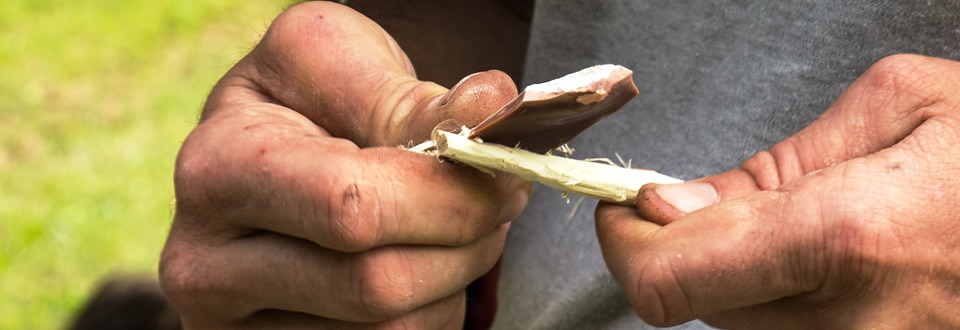The wood in Neolithic Age
The exceptional environmental conditions of the deposits and the high level of conservation of the wooden remains allowed us to find some tools and wood containers that are usually rare to find in other Neolithic sites in Italian wetland. The richest collections of objects of this type were found, in fact , in some villages of the Bronze Age of Trentino and Lombardia.
The woodwork of Palù attest, however, several aspects of everyday life: the use of boats, processing and preservation of food or liquids in containers, farm work, carpentry, etc.
For the construction of these objects Neolithic men had a choice of tree species available, on the basis of quality and technological characteristics of the wood: such as hardness, elasticity, impact resistance, ease of processing. Also, depending on the final shape of the object, they were using different parts of the tree: a bifurcation branch, a large strain or a branch slightly curved.

Il legno del corniolo/sanguinella è duro e robusto ed è spesso impiegato per fabbricare attrezzi agricoli, manici e cunei; nel nostro caso è stato scelto per uno strumento agricolo, un uncino o zappa.
The wood of the dogwood / crabgrass is tough and rugged and is often used to manufacture agricultural tools, handles and wedges; in our case it was chosen for an agricultural tool, a hook or hoe.
The deciduous oaks probably represented the most common species: this type of wood can be used for any type of processing, both for carpentry or for making artifacts of smaller dimensions. It’s a wood quite heavy and this sometimes can be a limit to its use.
The oak is very common among the building material of the huts of the village, but is not very used for tools and containers; we know in fact only one fragment of paddles made of oak. The ash wood is strong and flexible, providing an excellent material for objects subjected to high stress, as the other fragment of paddles, found in 1983. The spindle-tree is a species that fits very well, even in recent times, to the manufacture of cast or sharp artifacts. The maple wood is easily processable and has a remarkable aesthetic effect, it was in fact used for the manufacture of containers as small bowls.
The beech is one of the most durable, heavy and sturdy woods, but it’s easy to work and can be well finished, so it is an excellent material for the manufacture of handles of Neolithic stone or metal axes, as confirmed by several recent discoveries made in the villages of the Bronze Age.




